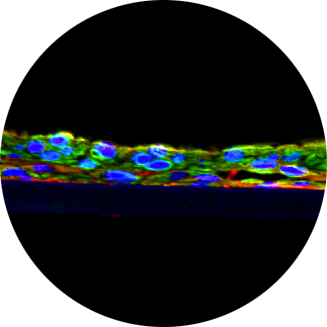Safety assessment of monographed OTC cold/cough medicine using an in vitro testing platform based on human reconstructed oral tissues
- TR Number: 1025
- Authors: Heather Walker, Emma Lear, Jakeb Phillips, Megan Creelman, Emily Acquaviva, Gertrude-Emilia Costin
- Materials Tested: OTC cough drops and cough syrups
Over-the-counter (OTC) products are available to alleviate concurrent symptoms of colds and flu. They are primarily based on a combination of decongestants, antitussive and alpha adrenergic agonists, which are well-established pharmaceutical agents covered by U.S. monographs. Many of the active components of the OTC cough/cold drugs are bitter and must be masked using flavoring agents. Bayer internally employed a stringent safety testing program for OTC cough/cold medicine line extensions that require the products to be held in the mouth for a short period using an innovative testing platform based on reconstructed oral tissues. A total of 7 OTC cough/cold products were tested using a screening approach in which the products were applied topically to the surface of reconstructed oral tissues (EpiOral™, Mattek Corporation, Ashland, MA, USA) for 2 hours, followed by evaluation of tissue viability (by MTT reduction method) and assessment of inflammatory cytokines IL-1a and IL-1b. The compositions tested were finished products, in liquid or tablet forms, and designed for children and adult use. Our tests confirmed that the products were safe to use based on the endpoints investigated that indicated no induction of irritation or inflammation up to 2 hours. The adoption of this in vitro testing platform attests the applicability and reliability of the modern technologies that not only support industry’s due diligence and reduction in animal testing, but also demonstrate the relevancy of such platforms to human exposure while providing fast, biologically relevant safety data.

